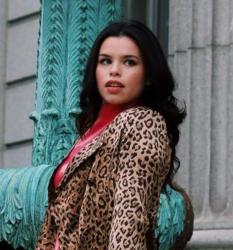Salsa music is not something you simply listen to. The conga, trumpet, and guiro sequences can be felt throughout your body and without so much as a thought, your feet, hips and shoulders begin to move in unison with the beat of the island music. Salsa is a Latin dance that has roots in Africa and quickly became popularized throughout the Caribbean, particularly in Cuba and Puerto Rico. By the 1920’s, it was popularized and all of the islands had put their own twist on it. Like the salsa we dip our chips in, it’s hot, spicy, and made up of a mixture of ingredients. Mario Gonzaelz, the mastermind behind Salsa Fever On2, was inspired by his Puerto Rican and Cuban roots and felt an overwhelming responsibility to keep his heritage alive through teaching the art of “on 2” style salsa dancing. Here’s how Salsa Fever On2 came to be.
About Salsa Fever On2
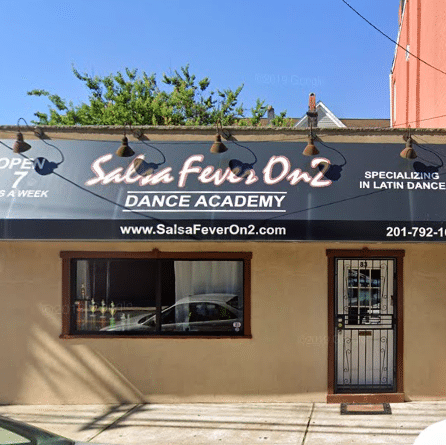
{Photo credit: @sfon2}
Salsa Fever On2 is a Salsa dance academy that was founded in 2000 and provides Latin dance classes to Hudson County locals with a structured curriculum that is conducive to all dance levels. “On 2” is a style of salsa dancing and means that the dance starts on beat number 2. Located at 83 Franklin Street in the Jersey City heights, Salsa Fever On2 offers the opportunity to take your dance skills and education of dance to the next level.
Growing Up in Hoboken
Mario was born and raised in Hoboken, and later moved to Jersey City with his wife Yvelisse. “Hoboken is so small but so authentic and communal. Particularly so during the sports era when so much talent was coming out of a small town. Being a part of that community means a lot to me,” Mario tells Hoboken Girl. His love for Jersey City is just as strong. “Its diversity of people and cultures is what makes it so special.”
Mario’s first experience with salsa dancing is from watching his parents dance in the living room. “We were so poor that my family would only play two tapes, El Gran Combo and Juan Luis Guerra. They didn’t dance professionally. My mom worked in Hoboken, and my father was a police officer in Puerto Rico and a baseball coach in Cuba,” he explains. “I was always the shy kid in the room and felt awkward that I came from two Latin countries known for music, as my dad was Cuban, and my mom was Puerto Rican.” Despite his shyness, as he grew older, his fascination with the dance grew as well. Early on, Mario’s curiosity for his parents’ native dancing blossomed into a career.
Read more: Best Spots for a Night of Dancing in Hoboken + Jersey City
From Learning to Teaching
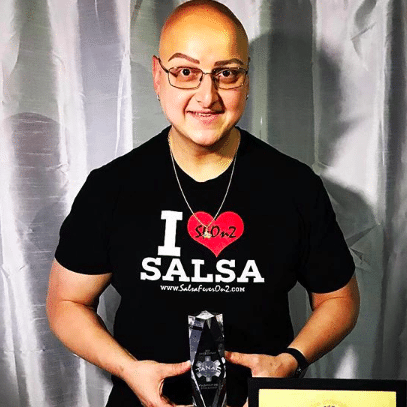
{Photo credit: @sfon2}
“When I started dancing in the ‘90s, I was much heavier and wasn’t well received by the dance community because it was a stereotypical time back then. You had to look and dance a certain way. On top of that, I definitely don’t look Latino, so I wasn’t exactly fitting in,” he adds. Despite the obstacles, Mario refused to let them get in the way of his passion.
Mario’s journey to discover salsa’s true history and technique began the hard way. “With a notepad and pen, I used to go to the old Latin quarters and do my own research by watching how the dancers reacted to the band. Eventually, I began to crack the code and understand the relationship between the dancers and the music.”
He began taking salsa lessons that were taught in people’s apartments, but they weren’t what he was expecting. “Back in the day, there weren’t any professional establishments teaching Salsa. You would walk in, they’d quickly ask for the money and he’d say ‘give me ten minutes to think about what I’m going to show you today.’ There was no hospitality or structure,” Mario explains.
Mario attended the first “Latin Night” at The Planet in Hoboken, and shortly after, he began teaching salsa classes there. “People would ask if I had a studio and that’s when the lightbulb came on. After a year, I started renting out the Hoboken Boys & Girls Club and the classes quickly started to grow. I went from teaching one class a week to three classes a week and they were still packed. Eventually, I started renting out a room in the Monroe Center back in 2000, and shortly after I found my current studio space,” he says.
The Birth of Salsa Fever On2
Salsa Fever On2 would be Mario’s first experience as a business owner, and with no college degree, he felt a little intimidated by the prospect. He confessed, “I was just passionate about teaching and getting the word out. I remember walking around Hoboken at 3:00AM, sticking a flyer on everyone’s windshield announcing my new location.”
“I got a call one time from the JCPD stating I had a large hole in my storefront window. When I arrived, it turned out to be a bowling ball that someone threw into my studio with a note that said “welcome to the neighborhood”. I knew I was in for a struggle, but I still pursued it and here we are 16 years later.” he proudly shares.
Mario could’ve opened his studio in New York, where the salsa scene is more prominent, but he felt that the city is “too saturated” and he wanted to “stay true to my roots and represent my home and my people. I wanted to show everybody that as dancers, we’re just as important as New York, and gain that respect for us as a community.”
All About the Dance School
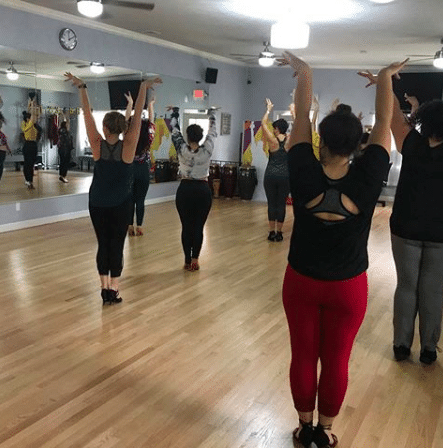
{Photo credit: @sfon2}
Mario’s main intentions for the dance studio was and is still to inform the students, give them the proper awareness of the history and keep to the authenticity of salsa dancing. “For example, we hear a lot of Marc Anthony or Victor Manuel, and we don’t hear those pioneers and architects that paved the way to be able to listen to the newer artists,” he explains.
Mario personally teaches most of the classes, specifically the fundamental classes like
the Pre-Beginner, Beginner, Advanced Beginner, and Intermediate. There are other instructors who lead the specialty classes like Mambo, Tango, Hustle, Bachata, Ladies Styling workshops, Spins and Turns workshops, Timing Musicality and more.
What stands out about Salsa Fever On2 is its curriculum. Mario notes that he “wanted a proper experience for my students. A lot of my homework was thinking about how I can do it better, and remove that stereotype that Latinos can’t be professional. We were the first ‘on 2’ dance school that had a syllabus in place.”
Unlike other dance schools that allow students to sign up for any class, Salsa Fever On2 requires new students to start with the pre-beginner class, regardless of how skilled you think you are. He explains, “It’s so that we can assess their skills and make sure that they progress at the right pace for them, similar to an academic advisor in a university.”
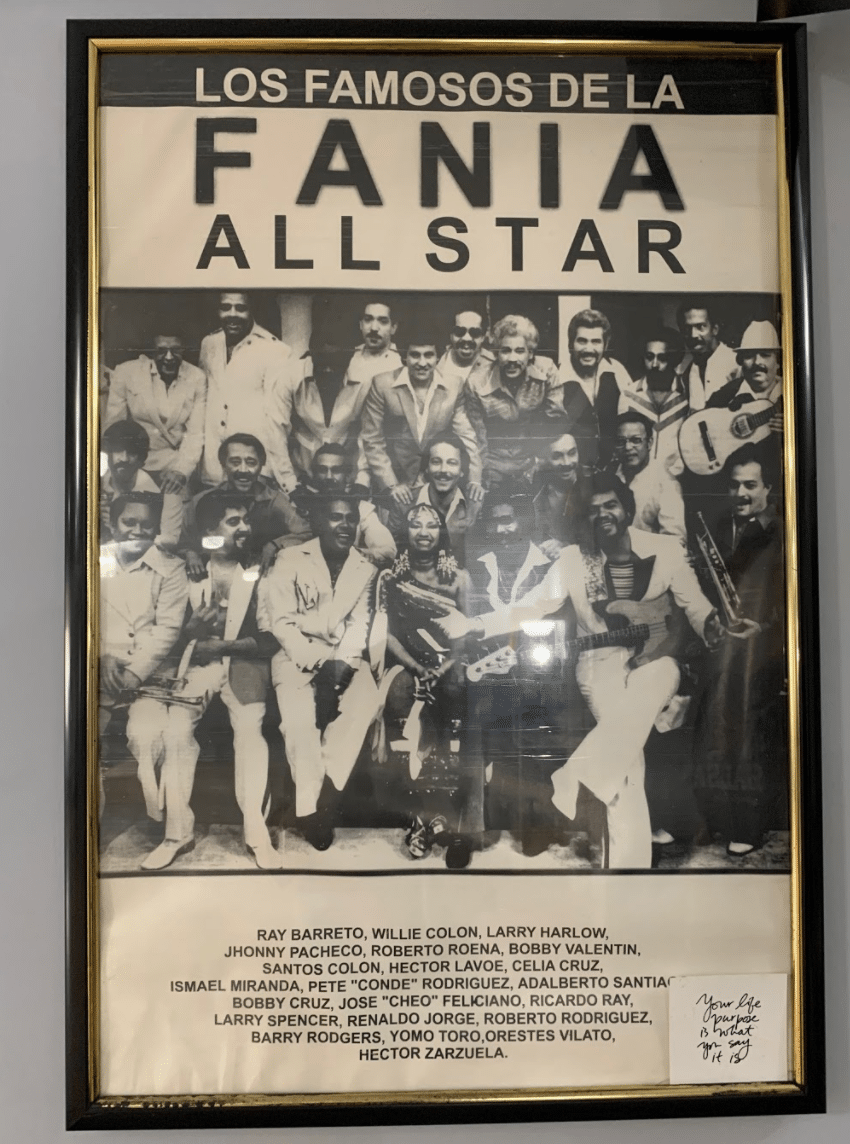
It’s more than just a dance school, Mario goes the extra-mile for his students. “We host practice parties and socials for our students to make them feel welcome and make sure they know all they can know about each dance so that they can decide what best fits them. Once a month we host a documentary night where students have the opportunity to come hang out, eat complimentary popcorn, drink soda, and learn the history of the dances from the pioneers themselves,” he shares.
Mario dedicates his life to ensuring that anyone who passes through his studio leaves with more knowledge than when they arrived. He explains that, “learning the music, the instruments, the pioneers, the origins, the struggle is just as important as learning the dance. The more information I learn, the more information I pass on, so they can appreciate it all on a deeper level. I want our students to feel that their money and time is being valued here.”
See more: Local Fitness Businesses Offering Online Classes + Streaming Options
Beyond the Dance School
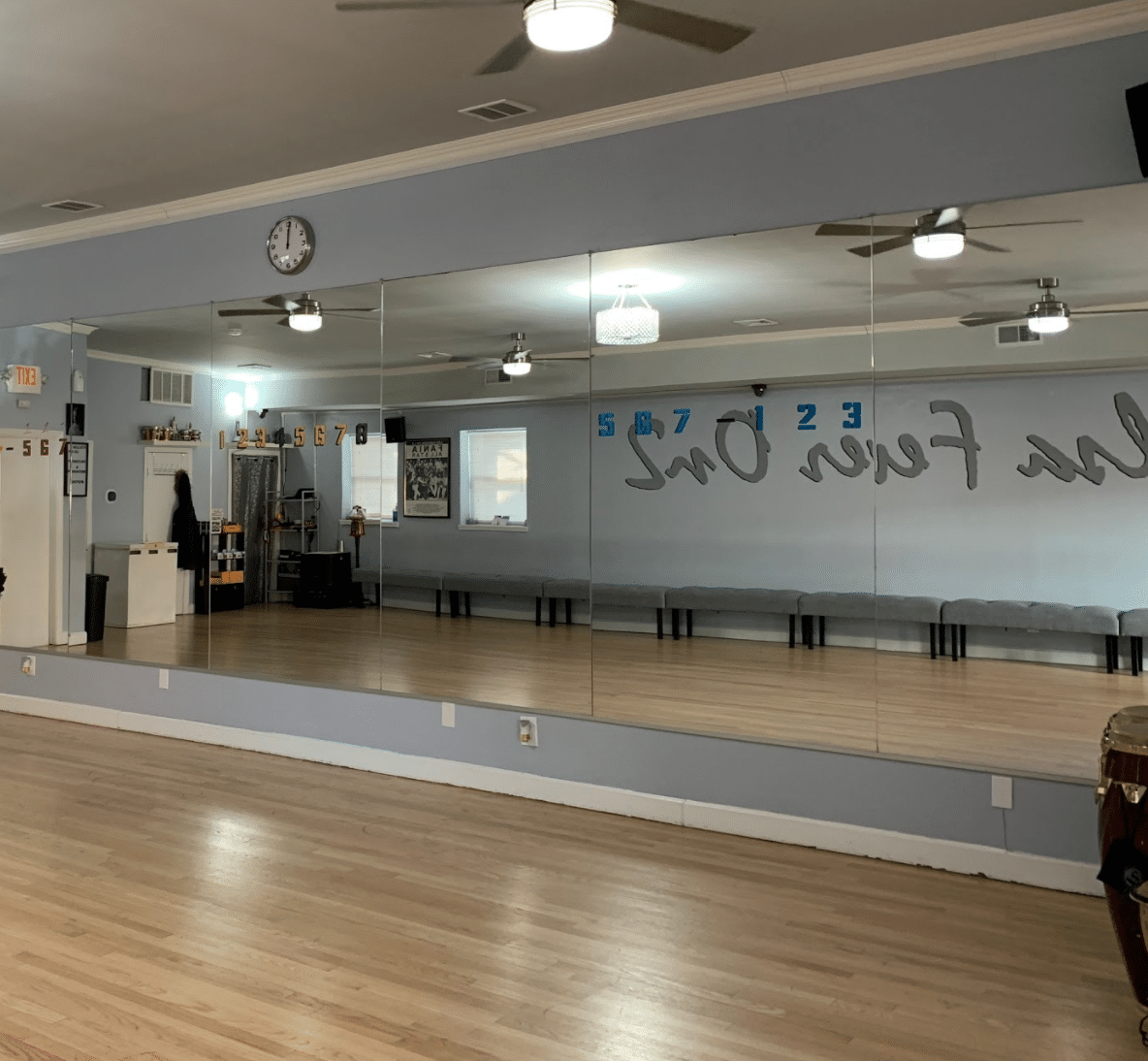
Mario has been widely recognized as a trailblazer in the salsa community and has been asked to share his knowledge by universities and festivals around the country. “I have been invited to do lectures about the history of dance in different universities around the country as well as host prestigious Latin dance events. One of the universities where I have taught is Arizona State University. I feel humbled and blessed because they could have reached out to any instructor in the world, and they chose me,” he shares.
“As far as Salsa events, I host eight congresses and festivals around the country, the New York Salsa Congress being the largest. I also host the Atlanta Bachata Festival, Alaska Bachata Festival, the Connecticut Salsa Festival, New Orleans Salsa Festival, and more. I host, DJ, and teach at the same time. You get the trifecta,” says Mario.
For those of you who are interested in taking Latin dance classes, but are intimidated, Mario has a word of advice. “It has been almost 25 years and I’m still learning new things. Don’t be intimidated, anything is possible. For me, it was more of a challenge because of my ignorance in thinking that I knew how to dance simply because I’m Latino but it was actually harder because I was convinced that I knew what I was doing,” he shares. “I tell my students before every class that we need transparency and prefer to work with a blank canvas. The more of a blank canvas you are, the more creative we can be.”
Our parents always said, if you choose to do something, you do it right. In Mario’s case, the roots of his parents inspired him in a way that he couldn’t see at first, but soon he felt a duty to learn everything there is to know about the origins of Salsa and Latin dance history and pass it on to as many people as possible. Mario avows, “I’m here to share the awareness that isn’t being taught in school because it isn’t politically correct or deemed not important enough. It’s missing from school curriculums, big time, and I’m able to help that.”









